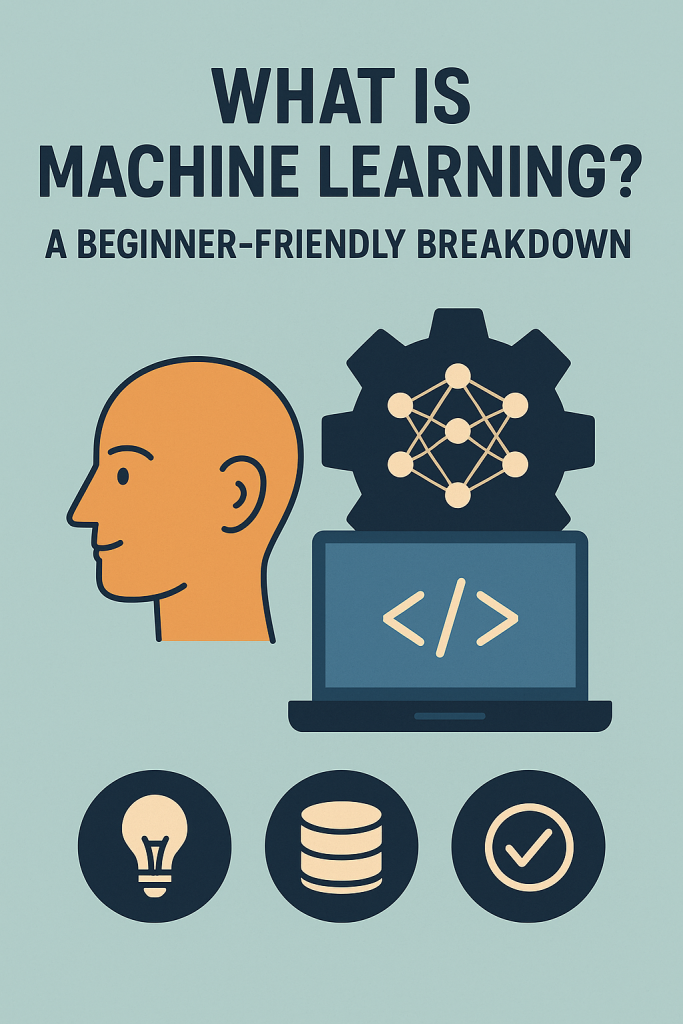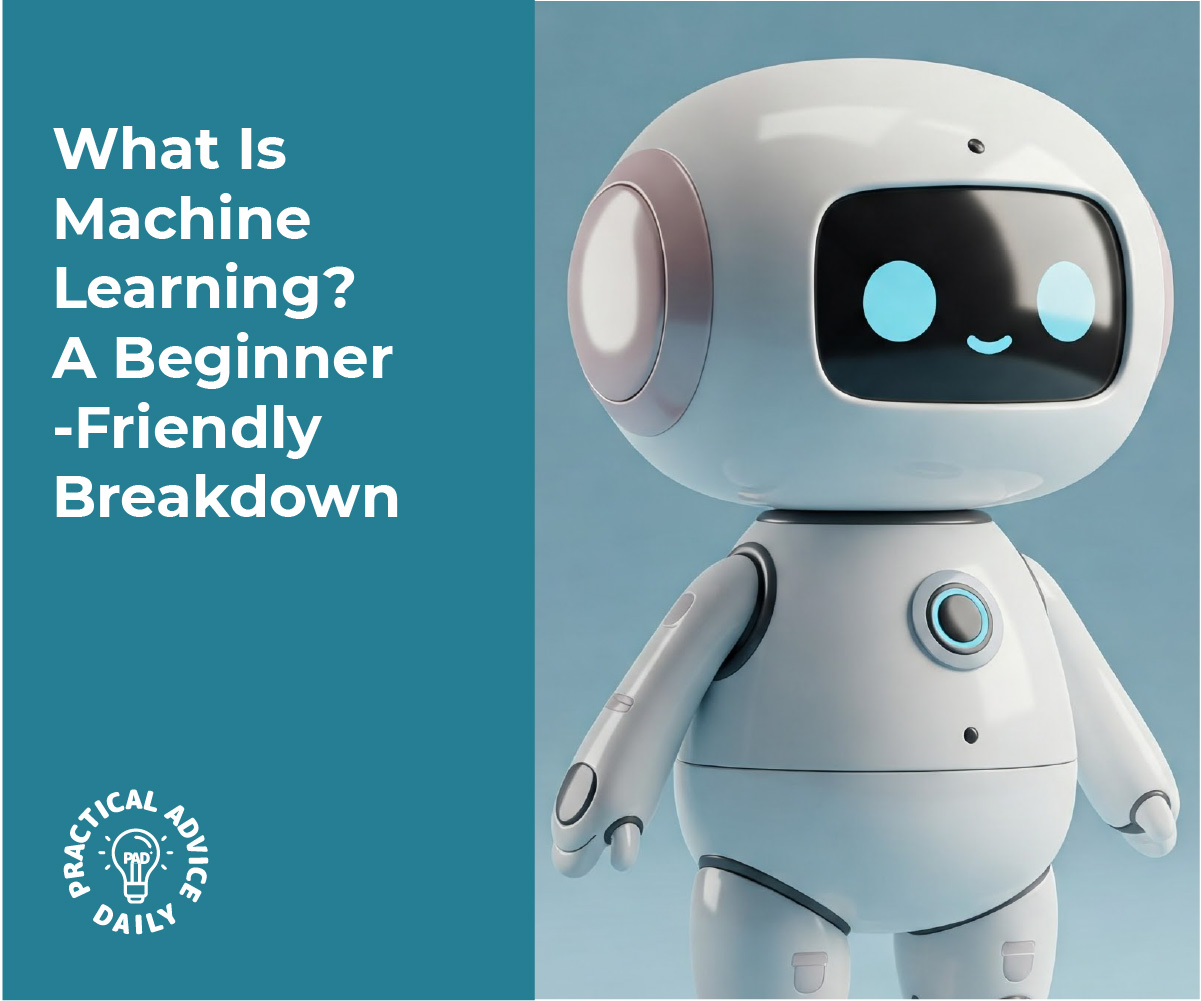You’ve probably heard the term “machine learning” tossed around in the news, online, or even at the doctor’s office—but what does it actually mean? If you’re not a techie, don’t worry. This guide will walk you through the basics in plain English. No complicated lingo. Just simple explanations and everyday examples to help you understand how this technology works—and how it affects your daily life.
Table of Contents
🔍 Key Takeaways
- Machine learning is when a computer learns from data, kind of like how we learn from experience.
- It helps power tools you may already use, like Netflix suggestions or spam filters in email.
- You don’t need to be a tech expert to understand how it works—just think of it as a way for machines to recognize patterns.
- Real-life examples make it easier to understand and see how it affects your world.
What Is Machine Learning?
Let’s break it down.
Machine learning is a way for computers to learn things without being specifically told what to do each time. Instead of being programmed with step-by-step instructions, the computer looks at data (which could be anything from photos to movie choices) and figures things out by spotting patterns.
Think of It Like This…
Imagine you love watching mysteries on Netflix. After a while, Netflix notices this and starts recommending more mystery shows. You didn’t have to tell it—your choices gave it clues. That’s machine learning at work. It looked at your watching habits (the data), noticed a pattern (you like mysteries), and learned what to suggest next.

How Does Machine Learning Work?
Let’s take a simple, step-by-step look:
1. Collecting Data
The first step is gathering information.
Example: Netflix collects data on what shows you watch, what time you watch, and how often.
2. Finding Patterns
Next, the system looks at the data to find patterns.
Example: “This user watches a lot of crime dramas in the evening.”
3. Making Predictions
Now that the machine sees a pattern, it tries to guess what you might like next.
Example: “If you liked Murder Mystery, you might enjoy Sherlock Holmes.”
4. Learning and Improving
Over time, the system adjusts based on new data. If you skip the suggestions, it learns and changes course.
Example: “You didn’t watch the romantic comedies we suggested—maybe you prefer thrillers.”
More Everyday Examples of Machine Learning
Here are some ways you may already be using machine learning without even realizing it:
- Email Spam Filters: Your email automatically sends suspicious messages to the spam folder based on past patterns.
- Voice Assistants (like Siri or Alexa): They get better at understanding your voice and preferences the more you use them.
- Online Shopping: Stores show you items “you might like” based on what others like you have bought.
- Maps and Directions: Google Maps learns traffic patterns and suggests quicker routes in real time.
Final Thoughts
Machine learning might sound complicated, but at its heart, it’s just about using data to learn and make smart guesses—just like we do in everyday life. Whether you’re watching your favorite shows or getting directions to a friend’s house, chances are you’re already using machine learning tools without even realizing it.
Understanding how it works can help you feel more confident in today’s digital world. And if you’re curious, there’s always more to explore—one simple step at a time.
